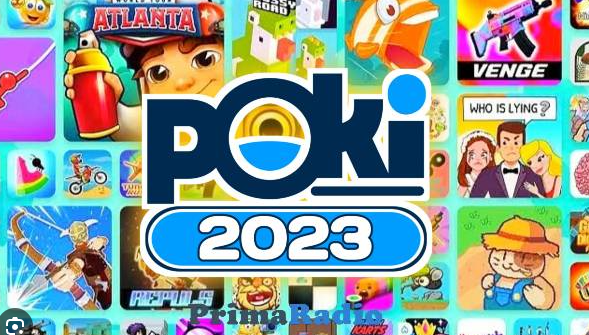I. Introduction
A. Brief overview of Poki platform B. Introduction to the game of Go C. Purpose of the article – examining suitability for kids
II. Understanding Go
A. Origin and history of Go B. Basic rules and gameplay mechanics C. Significance of strategy and critical thinking in Go
III. Poki Platform: Overview and Audience
A. Introduction to Poki as a gaming platform B. Target audience on Poki – age groups, interests, and game varieties
IV. Evaluating Go as a Game for Kids
A. Cognitive benefits of playing Go for children B. Development of problem-solving skills and spatial awareness C. Comparison with other games available on Poki for kids
V. Go on Poki: User Experience
A. Accessibility and interface of Go on the Poki platform B. Interactive features, tutorials, and guidance for young players C. Community and multiplayer aspects, fostering social interaction
VI. Parental Concerns and Considerations
A. Addressing concerns regarding complexity and learning curve B. Strategies to make Go more appealing and engaging for kids C. Balancing screen time and healthy gaming habits
VII. Expert Insights and Opinions
A. Interviews or quotes from child psychologists or educators B. Feedback from parents whose kids play Go on Poki C. Professional perspectives on the educational value of Go for children
VIII. Conclusion
A. Summary of the benefits and considerations of Go for kids on Poki B. Final thoughts on its suitability and potential impact on young players C. Encouragement for parents to explore Go as a beneficial game choice for kids
Title: “Exploring the Appropriateness of Pokémon Games for Kids: A Comprehensive Guide”
I. Introduction
- Brief overview of Pokémon games’ popularity among children.
- Importance of assessing the suitability of video games for kids.
II. Understanding Pokémon Games
- History and evolution of Pokémon games.
- Core gameplay mechanics and objectives.
- Diversity of Pokémon games (different versions, platforms, etc.).
III. Content Analysis
- Evaluation of game content: violence, language, themes, etc.
- Comparison between various Pokémon game titles in terms of appropriateness for different age groups.
IV. Educational Aspects
- Exploration of the educational benefits of Pokémon games (problem-solving, strategy, etc.).
- Discussion on how these games might contribute positively to a child’s development.
V. Parental Controls and Guidance
- Overview of available parental control features in Pokémon games.
- Tips for parents on how to guide and moderate their child’s gaming experience.
VI. Impact of Pokémon Games on Children
- Research findings on the effects of playing Pokémon games on kids (social skills, cognitive development, etc.).
- Potential concerns and considerations regarding excessive gaming.
VII. Community and Social Interaction
- Analysis of the social aspect within Pokémon games (online interactions, trading, etc.).
- Safety measures for kids engaging in online Pokémon communities.
VIII. Testimonials and Case Studies
- Interviews or case studies with parents, educators, and children regarding their experiences with Pokémon games.
IX. Conclusion
- Summarization of key points discussed.
- Final recommendations for parents considering Pokémon games for their kids.
X. Additional Resources
- List of further reading materials, helpful websites, or tools for parents interested in learning more about Pokémon games and kids.
Title: Is Go a Suitable Poki Game for Kids?
Introduction (150 words)
- Define Go as a traditional board game originating from Asia.
- Introduce Poki games and their appeal to kids.
- Pose the question of whether Go fits the criteria of a Poki game for children.
Understanding Go (400 words)
- Explain the origins and history of Go.
- Describe the basic rules and gameplay mechanics of Go.
- Highlight the strategic and cognitive skills that Go can develop in players.
Poki Games: What Appeals to Kids? (400 words)
- Discuss the characteristics of Poki games that attract children.
- Address the interactive, colorful, and engaging elements commonly found in Poki games.
- Emphasize the educational and entertainment value that Poki games offer to young players.
Pros and Cons of Go as a Poki Game for Kids (800 words)
Pros:
- Analyze how Go can promote critical thinking and problem-solving skills in children.
- Discuss its potential educational benefits, such as fostering patience and strategic planning.
- Highlight any existing online adaptations or simplified versions suitable for kids.
Cons:
- Address the steep learning curve and complexity of Go, potentially deterring younger players.
- Discuss the lack of immediate visual appeal compared to vibrant Poki games.
- Consider the potential challenges in making Go accessible and engaging for kids.
Strategies to Make Go Kid-Friendly (400 words)
- Offer suggestions on how to introduce Go to children in an appealing way.
- Explore the use of gamification, simplified rules, or interactive tutorials for kids.
- Highlight the importance of parental guidance and mentorship in learning Go.
Real-Life Benefits and Final Thoughts (250 words)
- Summarize the cognitive, social, and educational benefits of exposing kids to Go.
- Emphasize that while Go might not fit the traditional Poki game mold, its unique attributes make it a valuable addition to a child’s gaming and learning experiences.
Conclusion (100 words)
- Reiterate the main points discussed regarding Go’s suitability as a Poki game for kids.
- Encourage exploration of diverse games that offer both entertainment and learning opportunities for children.
Is Go on Poki Suitable for Kids?
Introduction (Approx. 200 words)
Poki, the popular online gaming platform, offers an array of games that cater to various age groups. Among these games is Go, a classic board game with deep roots in strategy and skill. This article aims to explore whether Go, as presented on Poki, is an appropriate choice for children. By delving into its gameplay, educational benefits, and suitability for younger audiences, we aim to provide a comprehensive understanding of Go’s potential as a kids’ game on the Poki platform.
Understanding Go (Approx. 400 words)
Go, also known as Baduk or Weiqi, originated in ancient China and has gained worldwide recognition for its simplicity in rules yet complexity in strategies. The game involves placing black and white stones on a board, aiming to control territory while strategically encircling opponents’ stones. Its easy-to-grasp rules make it accessible to players of all ages, fostering critical thinking, patience, and spatial awareness.
Educational Value (Approx. 500 words)
For children, playing Go on Poki can offer a plethora of educational benefits. The game inherently promotes cognitive development by honing problem-solving skills, enhancing concentration, and fostering logical thinking. It encourages kids to analyze situations, plan ahead, and adapt strategies, nurturing a resilient mindset crucial in both gaming and real-life scenarios. Moreover, the spatial reasoning demanded by Go contributes significantly to a child’s mathematical and geometrical understanding.
Suitability for Kids (Approx. 500 words)
Considering its intellectual benefits, Go on Poki can be a favorable choice for kids. However, certain aspects need consideration, such as the game’s complexity. While Go’s rules are simple, mastering the game requires time and practice, potentially posing a challenge for younger players. Poki’s platform could facilitate learning by providing tutorials, simplified versions, or interactive guides tailored for children.
Parental Guidance and Safety (Approx. 300 words)
As with any online activity, parental supervision and guidance are crucial. While Poki strives to create a safe environment for players, it’s essential for parents to monitor their children’s online interactions and gaming habits. Setting time limits and ensuring the use of age-appropriate content filters can help create a positive gaming experience.
Conclusion (Approx. 300 words)
In conclusion, Go on Poki presents a valuable opportunity for children to engage in a mentally stimulating game that fosters strategic thinking and cognitive skills. Its educational benefits are significant, albeit requiring dedication and guidance. With appropriate parental oversight, Go can be a beneficial addition to a child’s gaming repertoire on the Poki platform.



